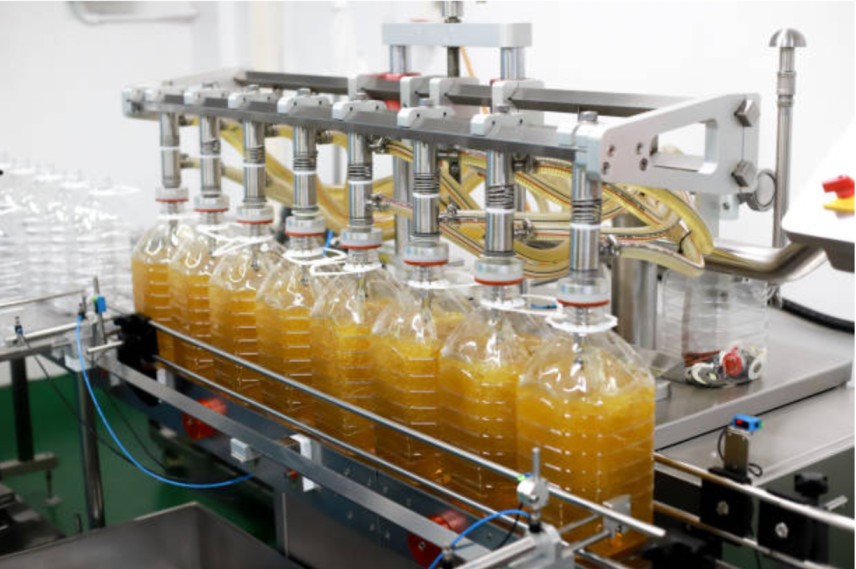Packaging thick, sticky products-like honey-brings some really tricky problems for factory lines. Unlike water or juice, honey drags along because of its density, so every spill, slow pour, or miscalculation wastes time and money. That is why any food, health, or specialty brand working with honey should think seriously about a reliable honey filling machine: it controls every dose, cuts cleanup hours, and speeds up the line while keeping things clean.
Built to fit into a full line of automatic packaging machinery, modern honey fillers use smart sensors, gentle pumps, and no-drip nozzles just for thick liquids. In the rest of this post we will break down how these systems really work, the big payoffs they bring, and the way a single machine can lift the speed and quality of any sticky product plant.
Why Filling Thick Products is Trickier Than You Think
Sticky liquids like honey don’t flow the same way water or juice does, and that can cause real headaches on the packaging line. Because they are thick and tacky, they pour slowly, leave long strings behind, and change behavior if the room gets warmer or colder. Those quirks can turn a simple fill-and-cap job into a bigger problem:
- Fills that are never quite right
- Lines that crawl instead of race
- Product splatters everywhere
- Bacteria that hitch a ride on spills
- Money lost to spilled product
Because of all this, packagers must use equipment built just for sticky, high-viscosity goods. A dedicated honey filling machine, linked to a full automatic packaging line, answers that special need.
How Honey Filling Machines Work
Honey filling machines use smart pumps and responsive servo motors to handle the thick syrup quickly and correctly. Depending on how busy the line gets, manufacturers usually pick one of these setups:
Piston Fillers
Piston fillers shine when the product is really heavy. A sliding piston pulls back a set amount of honey, then pushes it into the container without spilling. They fit almost any format, including:
- Jars
- Bottles
- Tubs
- Squeeze containers
Peristaltic and Gear Pumps
These heads move honey slowly and steadily, meaning there is less shear that can trap air. They are perfect for jobs that need accuracy and for changeovers that happen a lot since the parts are easy to clean.
Heated Hoppers and Nozzles
To stop honey from getting stiff, modern machines come with hoppers and nozzles that warm the product just a bit. That consistent heat cuts bubbles, stops drizzling, and keeps the line rolling faster.
In a fully automated setup, the honey filling machine talks to the packaging unit so they feed lids, dose, seal, and label without the operators lifting a finger.
Key Benefits of Automating Honey Filling
Switching to an automated honey-filling line brings more than just a speed boost. It also strengthens quality control, keeps the workspace clean, makes staff hours more valuable, and provides room to grow.
Improved Accuracy and Reduced Waste
Modern filling heads deposit exactly the same weight into every jar, so there’s little extra honey left pooling on the rim. When you sell premium or organic brands, keeping every gram saves money and looks better on the shelf.
Consistency Across Product Lines
Machines set to a fixed program fill each batch at the same level, label cleanly, and seal tight. That steady performance builds trust, cuts returns, and gives your brand a tidy appearance no matter the container style.
Enhanced Hygiene and Sanitation
Honey naturally attracts dust and insects if spill residue sits around, so equipment needs to stay spotless. Today’s filling lines use stainless parts, clean-in-place systems, and drip-proof nozzles that cut the cleanup time and keep corralled microbes.
Faster Throughput and Labor Savings
Depending on setup, a single line can fill dozens, sometimes hundreds, of jars every minute. Letting a machine do the repetitive work trims labor costs, lightens lifting strain, and frees staff to tackle tasks that really require a human touch.
Flexibility for Multiple Product Types
Some filling machines swap parts quickly so they can package different SKUs and container styles. This feature works well for honey makers who sell several flavors in jars, pouches, or bottles of varying sizes.
Integrating Honey Filling Machines into Packaging Lines
To get the most speed and accuracy, a honey filler should sit inside a full automatic packaging machinery setup. Such a line usually contains:
- Container unscramblers or conveyor systems
- Capping or sealing stations
- Label applicators
- Shrink sleeves or tamper-proof bands
- Cartoning or case-loading units
When these pieces run together, the line moves products from start to finish with little hand work, cutting waste and boosting overall output.
Real-Time Monitoring and Digital Control
Today’s honey filling machines usually have simple touch screens and PLCs, and they let you:
- Save recipes for different products
- Adjust fill volumes digitally
- Get alerts when downtime starts or maintenance is due
- Work with ERP systems to track inventory and quality
Customization for Unique Production Needs
Some plants still need special setups, such as:
- Dual or multi-head fillers to boost output
- Cleanroom models for pharmaceutical-grade honey
- Vacuum fillers that leave no bubbles
- Explosion-proof builds for risky areas
Choosing the right base machine and extras helps future-proof production.
Key Considerations When Choosing a Honey Filling Machine
Not every filling machine does the same job well, so buyers should look closely at a few important points before deciding:
- Viscosity Range: Can the machine handle thick liquids without mess?
- Fill Accuracy: How tight is the fill margin and what keeps it steady?
- Production Volume: Will the setup keep pace with your daily targets?
- Container Compatibility: Which bottles, jars, and pouches does it fit?
- Cleaning and Maintenance: How fast can you switch from one run to the next?
- Integration Potential: Will it connect with gear you have now or plan later?
- Regulatory Compliance: Does every part pass food-safety and sanitize rules?
Teaming with a knowledgeable supplier usually brings machines that match production goals, meet rules, and protect long-term profits.
Conclusion
For anyone pouring honey or other thick products, a dedicated honey filling machine does more than speed things up-it cuts spills, keeps lines clean, scales easily, and shows a uniform label on every container. When linked to a complete automatic packaging machinery system, these units give steadier performance that lets companies grow without second-guessing.
Sticky products like honey can cause big slowdowns on the production line, but a good filling machine handles that mess. By managing the drips and globs, these machines clear away bottlenecks and help factories run smarter and leaner. In today’s fast market, where every jar counts, how a product looks on the shelf can matter as much as the taste.



